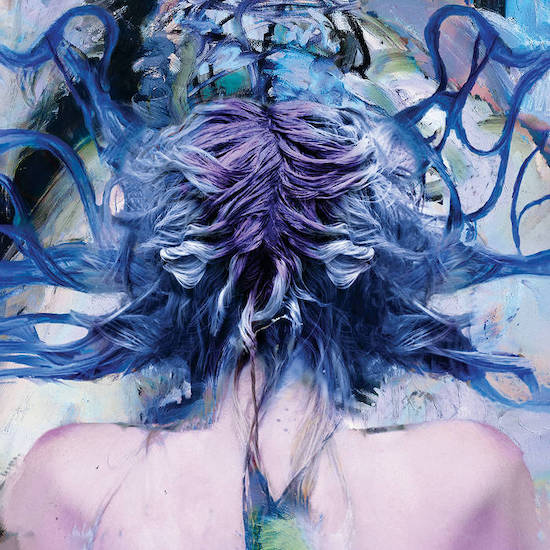I first crossed paths with Lyra Pramuk in 2019, when I interviewed her for The Void, the music magazine offshoot of Amsterdam based event platform, Subbacultcha. We spoke about her friendship with Donna Huanca – the artist responsible for the painterly collage that appears on the covers of both Delta and 2020’s Fountain – as well as her love for Ursula K. Le Quin and Audre Lorde’s writing. From indie fanzines and backroom shows, in just two years, Pramuk’s career has transcended to cosmic heights. She has graced headline slots at Unsound, where she performed via a multi-channel array designed by Ben Frost, opening for Sunn O))) and Roly Porter, and with CTM festival at Berghain. Reworking the format of the classic remix album, Delta is a testament to that transformation. Fourteen artists – friends, peers and collaborators – pay homage to Fountain, reimagining it through the prism of their own signature style.
First up is ‘Offering’, in which Icelandic producer and fellow signatory of Bedroom Community Records, Valgeir Sigurðsson, places a thundering, monotonous beat under Pramuk’s vocals. The noisy rhythms push her acapella into the background but elevate their synthetic, otherworldly cadence. Caterina Barbieri similarly blasts over ‘Tendril’, coating the track in her immediately recognisable, intricate lattice of analogue synth.
Delta’s most refined moments, however, arrive when its contributors let their source material fully expand and breathe. Colin Self’s vision of ‘Witness’ sees the American artist emboldening the operatic bent of the original with a chorus of clapping hands, church organ, and strings. Beginning with an incantation – a whispered spell, diffused through a disorientating pan effect – the song builds upon the spellbinding reverence of the initial rendition. Eris Drew similarly opts for grandiose enormity with ‘Everything is Beautiful & Alive’, an unapologetically four-to-the-floor house anthem that even features an OTT-turntablist rewind.
Pramuk’s influences are certainly innumerable, encompassing everything from spiritual gospel and sensual R&B to pagan folk and Björk’s cyborg pop. Yet, to me, she’s always resonated with the genre of contemporary club music. Much like another Berlin luminary, the saxophonist Bendik Giske, a traditional instrument – her classically trained voice, perfected at the Eastman School – is utilised to emulate techno’s machinic pulse. And it’s the tracks that explore that caustic rhythmic element that work the best.
But it’s Gabber Modus Operandi who take Delta to its most ambitious territory. ‘Kaca Bulan Baru’ appropriates Fountain’s darkest utterances – its inhuman howls, cries, and moans – together with power electronics, radio static, raucous explosions, and screaming. The result is a jarring sonic fiction: an envisioning of a sacrificial ritual or military onslaught that bears resemblance to Kode9’s dread-inducing experiments with bass. It’s here in which the album revels in the true dexterity of Pramuk’s abilities, bending the layers upon layers of vocal into incredible new shapes.


